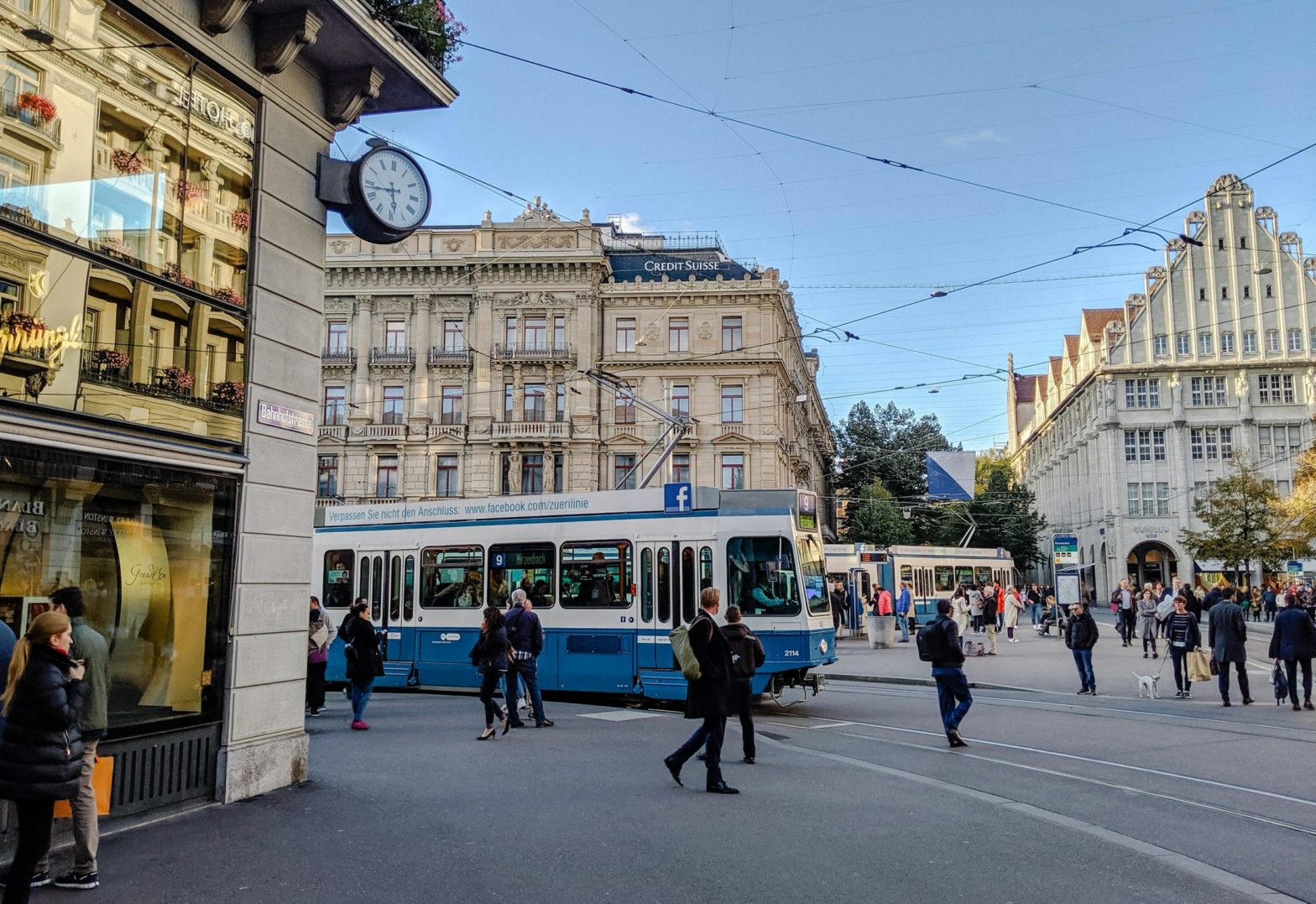
Photo: Todd Diemer on Unsplash
The city where no one is lonely
05 May 2022
by Sarah Wray
A recent report called on cities to consider setting a target of ‘zero loneliness’. Sarah Wray looks at whether this is possible and how we might get there, from spatial planning to designing more kindness into public services.
According to the latest statistics, one in 20 adults in Britain are often or always lonely. This includes 700,000 people in the densely populated capital of London, with the pandemic deemed likely to have exacerbated the situation.
As well as the personal toll this takes on individuals, it’s a challenge for society more broadly. Research suggests that disconnected communities could be costing the UK economy £32 billion (US$40 billion) every year, and mounting evidence finds that loneliness can be as bad for our health as smoking and obesity and is associated with increased risks of heart disease, stroke and dementia.
For these reasons, reducing loneliness is becoming an increasingly important policy at the national and local levels.
In 2018, the UK government launched a loneliness strategy and a number of cities are also taking steps to tackle the issue.
A recent report from Key Cities, a network of 25 cities across England and Wales, urges cities to go further through ‘zero loneliness’ targets.
The report, The Healthy City, sets out a new ‘health first’ vision for cities by 2050 to address interlinked challenges related to health, climate change, economic and technological shifts, inequity and social justice.
The report was commissioned by Key Cities with research undertaken by Nexus Planning, Resilience Brokers and WPI Economics.

Shaun Andrews, Executive Director at Nexus Planning, says: “I don’t think we have seen any cities set a vision zero for loneliness yet, but we are hoping that as a result of the report many of the things that we are talking about find a way through.”
The ‘vision zero’ approach is based on similar initiatives to end road traffic deaths and serious injuries, and to boost safety on construction sites.
Stephen Passmore, CEO at Resilience Brokers, comments: “What we’ve seen in those arenas is that ‘vision zero’ really shifts the discussion.”
“In a sense, it is a provocation,” he says. “And that was partly our steer in creating the report — to go out to 2050 and imagine what cities might be like. And when we’re thinking about cities being healthy places and places for all, we felt that this had to be a really exciting ambition.”
Experts typically make a distinction between chronic loneliness – when a person often or always feels lonely – and occasional loneliness.
“Sometimes being lonely is just a part of life. It’s a negative emotion but it can be useful too, to spur us to do things,” says Robin Hewings, Programme Director of the Campaign to End Loneliness, which has published guidance for councils. “The focus needs to be on when loneliness goes from being something that you feel a bit or sometimes to being what your day-to-day life is like, because that is when it cuts very deeply. That’s where it leads to quite serious, long-term mental and physical health issues.”
He believes a vision zero approach for cities is “ambitious but realistic.”
“It’s a long road to zero chronic loneliness but you can start building things now that get you there.”
What can cities do?
There’s a growing consensus that councils have a key role to play in tackling loneliness due to their knowledge of the local community and ability to bring together partners and projects.
Many also face significant financial constraints, but organisations such as the Local Government Association point out that tackling loneliness is a preventative measure that improves quality of life and reduces long-term costs.
“Interventions are generally low-cost or cost-neutral and can provide a good return on investment,” the association says on its website.
Some local authorities are already seeing social inclusion and connectedness as a big part of their role within health and social services, says Andrews, citing examples such as Newport’s Community Connectors and Blackpool’s work around mental health promotion and community development. As part of its pandemic recovery programme, London plans to have 250,000 ‘wellbeing champions’ by 2025 and is also working to improve social prescribing for adult education.
Evidence shows that loneliness is not random and highlights the need for a systemic approach. Research commissioned by the Greater London Authority identifies key characteristics impacting loneliness in the city as: being acutely poor, being single or living alone, being disabled or deaf, going through life changes or being new to London, and feeling different or experiencing prejudice.
The Key Cities report outlines some of the major areas where local authorities can use a holistic, health-first planning approach to further address loneliness, including deploying underutilised public space, having a transport network that encourages social interaction, rethinking high streets and town centres, and having community as a key consideration in design and planning.
One factor is bringing more people into the design and planning process.

Passmore quotes urbanist and activist Jane Jacobs, who wrote that: “Cities have the capability of providing something for everybody, only because, and only when, they are created by everybody.”
Emerging trends in this area include participatory budgeting as well as events and digital tools that enable more people to contribute in different ways “beyond a message through the door or a notice on the lamppost”.
Passmore also believes councils should consider designing more ‘kindness’ into their own services – something that was identified as an area for action in London.
He says: “People can end up feeling as though they’re just a cog in the system if their form is rejected. If there’s a five-minute conversation about that or something that’s important to them, that can make the world of difference.”
Local authorities could also use existing public buildings and spaces more as part of loneliness reduction strategies.
“We’ve already got great social infrastructure with libraries and schools, for example, so it could be about devising ways to get more value out of that,” says Passmore. “Could schools be open in the evenings more for the local community?”
Rethinking the high street
Andrews is a member of the government’s High Streets Task Force. As the pandemic shifted people’s commuting and shopping habits – possibly for good – there’s an opportunity to rethink the role of urban centres, including through the lens of loneliness.
“We all need a sense of belonging,” says Andrews. “And when cities or towns don’t provide that for us, the impact can be magnified.”
Some research suggests that the risk of depression is 20 percent higher for urban dwellers than those who live outside the city.
Andrews believes a key focus should be on more mixed-use spaces and high streets that aren’t dominated by retail and restaurants alone. This could include more uses related to health, education, libraries and government offices.
“Bringing those things back into the centre means we would have a very strong nucleus and somewhere where people can gravitate towards,” he says. “Hopefully that kind of energy and replanning will create a greater sense of belonging within communities.”
Monkey Park, a café, community centre and co-working space in Brampton, Chesterfield is one of the case studies featured by The Loneliness Lab network. As a social enterprise, Monkey Park’s goal is to “improve the local community by bringing people together and supporting their efforts to change the local area”.
“The big success there is that it builds trust,” says Passmore. “Anyone can come in and they’re accepted. They immediately have someone that they can chat to or have a coffee with. And they’re able to shape the space themselves, so if they feel like they need another service then they can do that.”
Digital tools also have a nuanced role to play.

“Digital [technology] can be used in ways that make us feel more lonely. But it’s also the case that it’s really helpful with keeping in touch with people and also finding out what’s out there,” comments Hewings.
Through a collaborative project, Resilience Brokers developed a text message service which encourages the over-50s at risk of social isolation and digital exclusion in the borough of Hackney to visit the nearby Queen Elizabeth Olympic Park.
The service includes details about activities of interest as well as the local weather and accessible travel information.
Passmore says: “It is a very small pilot study, but it did begin to show how through the use of technology, and in this case text messages, that people were able to overcome digital isolation as well as physical isolation and begin to lead healthier, more outdoor lifestyles.”
A 5G project in Liverpool showed how technologies such as a ‘push to talk’ tool that links older people for a chat and a loneliness quiz and bingo app can help to reduce loneliness.
Designing people in
As the UK and other countries grapple with an ageing population, another growing trend is promoting intergenerational living and ensuring that older people are not designed out of public spaces.
Andrews says Nexus Planning is working in this area with a number of clients.
“We’re looking at opportunities to bring senior living – everything from retirement living right through to care homes – into our centres, not pushing them out to the peripheries, so that the people that are moving in benefit from being part of a community and the community benefits from having them living within it.”
Now could be an important time for more cities to define strategies and targets to address loneliness.
During Covid many of us experienced a glimpse of what it is like to be profoundly lonely and isolated and the number of people feeling lonely increased.
“All of us came to understand the value of our social relationships,” says Hewings.
“Loneliness matters enormously to people who are feeling it. Although we don’t have all the answers, there are definitely practical things that councils can do that will make a difference.”
Hewings, who formerly worked in tobacco control, draws parallels with the goal of zero loneliness. Early efforts to raise awareness and reduce smoking date back to the 1960s and national smoke-free deadlines are on the horizon from 2030.
He says: “You only wish we’d have done more, more quickly. I think it’s something very similar with loneliness.”
Image: Todd Diemer on Unsplash












